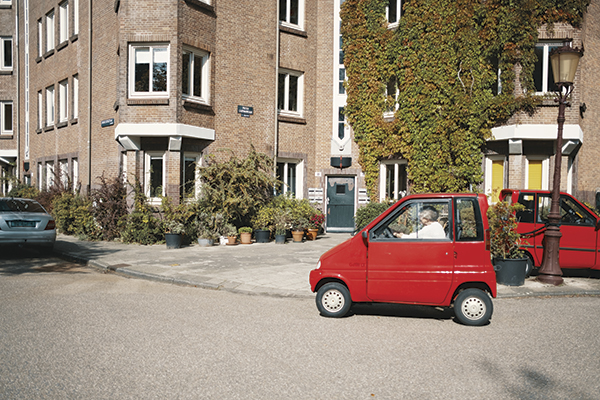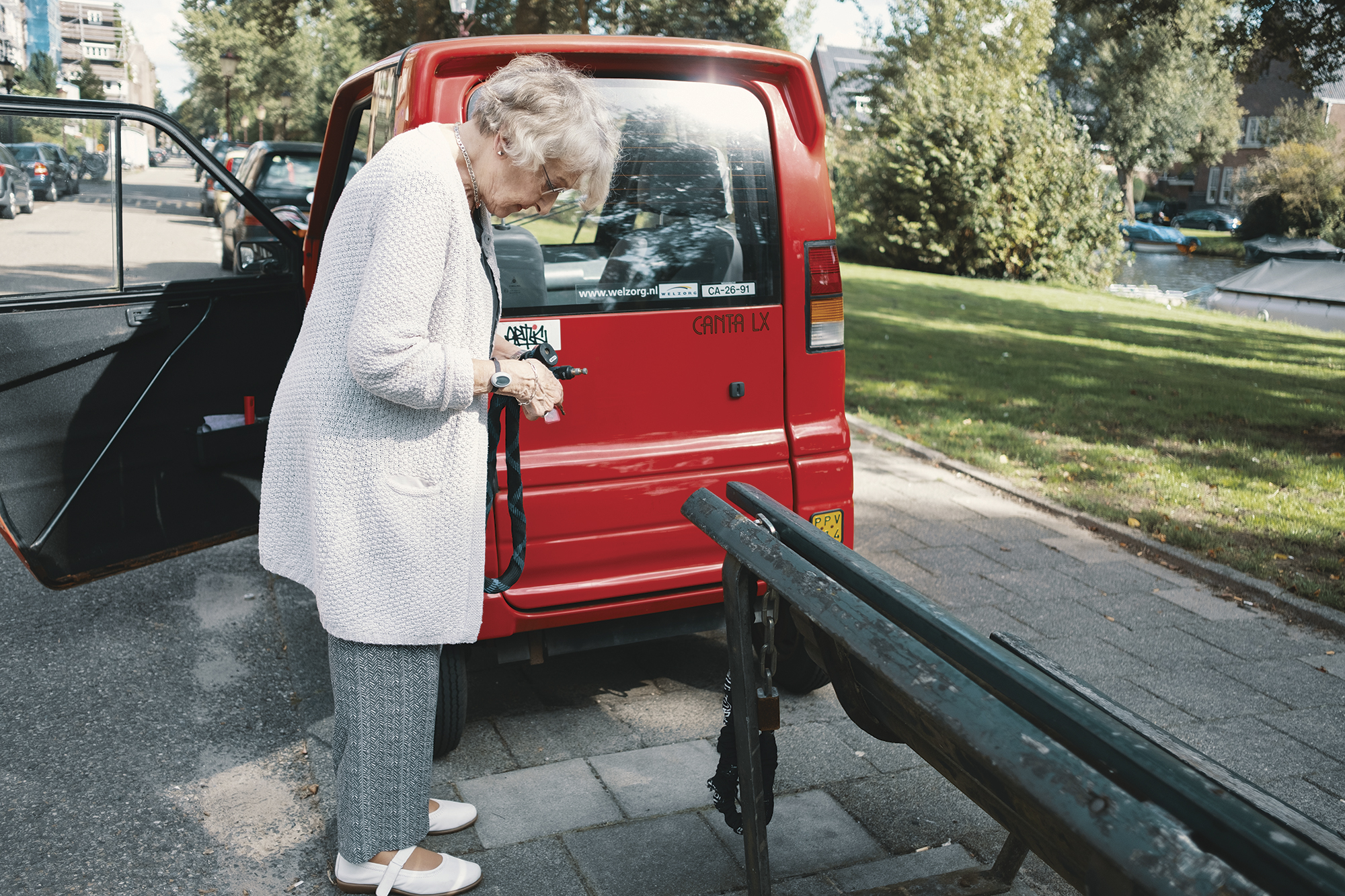- June 11, 2019
- Lauren Hassani
Yes You Canta!

Hetty Winkler-Ekel turns off a quiet residential side street onto a busy avenue in her south Amsterdam neighborhood and floors it. Well, as much as possible in a car that maxes out at 28 miles per hour. It’s a noisy ride, with a roar that belies the tiny, .16 liter, one-cylinder engine. She deftly maneuvers on both bike lanes and traffic lanes during the course of her short journey, finally pulling into a prime parking spot on the sidewalk, to the left of a park bench — a perfect anchor for chaining her cherry-red Canta LX. This is no ordinary driver, and no ordinary vehicle: Winkler-Ekel is 91 years old and she is driving a microcar.
Microcars like the Dutch Canta provide seniors and those with physical disabilities with an alternative form of transportation. This is particularly useful on city streets, like those in Amsterdam which are frequently only navigable by bicycle or on foot. At 44 inches wide by 91 inches long and 62 inches tall, the Canta makes a Smart Car look like an SUV. These dimensions qualify it as a “mobility aid,” because unlike other micro cars, the Canta can be driven in bike lanes and parked directly on sidewalks and does not require a driver’s license to operate.
The first Canta was produced in 1995, the creation of Dick Waaijenberg, a former race car driver and mechanic, in partnership with Delft University of Technology. For years, Waaijenberg had fiddled around with designing a car specifically for the disabled and, inspired by the French microcar Arola, decided to produce a Dutch version. To save on costs, the car was cobbled together with parts from other car manufacturers, which sometimes resulted in funny discrepancies in scale in such a tiny car. Now, 24 years later, the car has reached something of an iconic status in the Netherlands, though certainly not prolific. The company only produces a few hundred per year.

Winkler-Ekel locking up her car.
Winkler-Ekel has been driving her Canta for six years now, ever since she was forced to give up bike riding at the tender age of 85. She bought a used vehicle for €5,000 using subsidies from the Amsterdam government. New models start somewhere around €14,000. Another version, called the “Ride-in,”or Inrij (€18,000) is designed to be wheelchair accessible, with rear door access.
Health issues, including neuropathy, have limited Winkler-Ekel’s mobility in recent years. Yet she insists on not remaining house-bound. She lives on the first floor of an apartment building in Willemspark, where her Canta is parked about 20 steps from the front door.
“Every year I can do less,” she says. “I am very glad for the Canta. I could do all the things I’ve wanted to these past years.”

Winkler-Ekel in the living room of her apartment, where she has lived for decades.
Although Winkler-Ekler was initially anxious about getting behind the wheel, a few lessons from her son Walter gave her confidence. Now, she goes out every other day to the grocery store, to piano lessons, and to the senior center. She jokingly calls it a koekblik, or a cookie jar, referring to its diminutive size and truncated shape. Her beloved Canta even holds a position of honor as her Facebook profile picture.
Her son is appreciative of the quality of life this tiny car has allowed her to have. “I can’t worry about her too much,” he says. “She’s 91. She’s not going to live forever. But the Canta gives her a lot of freedom and lets her live her life. She’s self-supporting and I can’t ask for anything more.” ◆